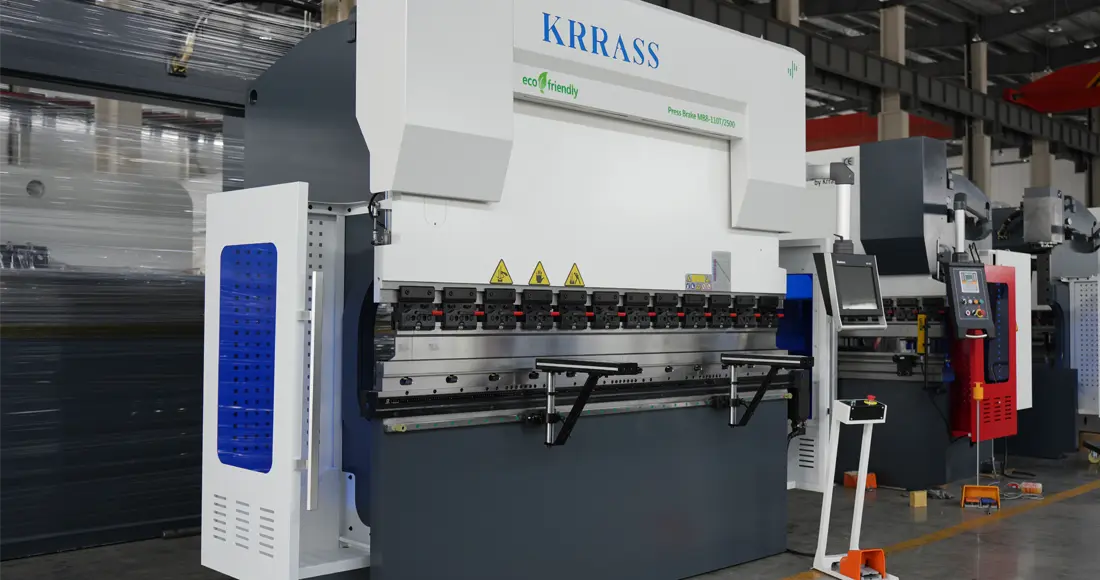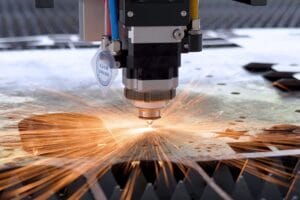When it comes to precision metal forming, choosing the right press brake can be a game-changer for your manufacturing efficiency and product quality. In this comprehensive guide, we delve into the critical differences between Hydraulic Press Brakes and Electric Press Brakes, providing you with the knowledge needed to make an informed decision for your operations. Whether you are involved in heavy industry, custom metal fabrication, or precision engineering, understanding these key distinctions will help you select the perfect machine to enhance your production capabilities.
- The Importance of Choosing the Right Press Brake
- Advantages of Hydraulic Press Brakes
- Disadvantages of Hydraulic Press Brakes
- Key Features of Hydraulic Press Brake
- Popular Applications of Hydraulic Press Brake
- Advantages of Electric Press Brakes
- Disadvantages of Electric Press Brakes
- Key Features of Electric Press Brakes
- Popular Applications of Electric Press Brakes
- Comparing Hydraulic and Electric Press Brakes
- How to Choose a Righ Press Brake?
The Importance of Choosing the Right Press Brake
When it comes to shaping metal, the press brake is an indispensable tool in your manufacturing arsenal. But not just any press brake will do; choosing the right one, whether it's a Hydraulic Press Brake or an Electric Press Brake, can significantly impact your production efficiency, quality, and overall cost. But why is the selection so crucial?
Firstly, the right press brake aligns with your specific production needs. Whether you're bending small, intricate parts or large, thick sheets, the type of press brake you choose can make all the difference. Hydraulic Press Brakes are known for their robustness and versatility, suitable for a wide range of materials and thicknesses. On the other hand, Electric Press Brakes offer precision, speed, and energy efficiency, particularly beneficial for high-volume, repetitive tasks.
Furthermore, the choice between a hydraulic or electric press brake affects operational costs and maintenance. Hydraulic models, while powerful, may incur higher maintenance and operational costs over time. Electric models, conversely, tend to have lower running costs and are easier to maintain, making them a cost-effective option in the long run.
Lastly, the technological advancements in press brakes, such as CNC controls and programmable features, mean that choosing the right machine is more important than ever. The right press brake not only fits your current needs but also adapts to future projects and technological trends.
In summary, selecting the right press brake—hydraulic or electric—is not a decision to take lightly. It impacts everything from production capabilities and quality to operational costs and future adaptability. In the next sections, we'll delve deeper into the specifics of Hydraulic and Electric Press Brakes, helping you make an informed decision tailored to your manufacturing needs.
Advantages of Hydraulic Press Brakes
Power and Versatility
The Hydraulic Press Brake stands out for its exceptional power and versatility, making it a preferred choice for manufacturers dealing with a wide range of materials and thicknesses. Its ability to exert substantial force allows it to handle heavy-duty bending tasks with ease. Moreover, this type of press brake can be adjusted to work with different materials, providing manufacturers with the versatility needed to take on various projects without compromising on quality or efficiency.
Suitability for Large Scale Operations
When it comes to large-scale manufacturing operations, the Hydraulic Press Brake proves to be immensely beneficial. Its robust design and capacity for continuous operation make it ideal for handling large volumes of work. This is particularly important in industries where production timelines are critical. The hydraulic press brake's ability to sustain prolonged periods of operation without a decrease in performance or accuracy ensures that production schedules are maintained efficiently.
Flexibility in Operation and Control
Flexibility is another significant advantage of the Hydraulic Press Brake. These machines offer a wide range of settings and controls that can be fine-tuned for precise bending operations. This flexibility allows operators to make quick adjustments and cater to complex bending requirements with ease. Additionally, the integration of modern CNC (Computer Numeric Control) systems enhances this flexibility, allowing for more accurate, repeatable, and efficient bending processes, tailored to the specific needs of each project.
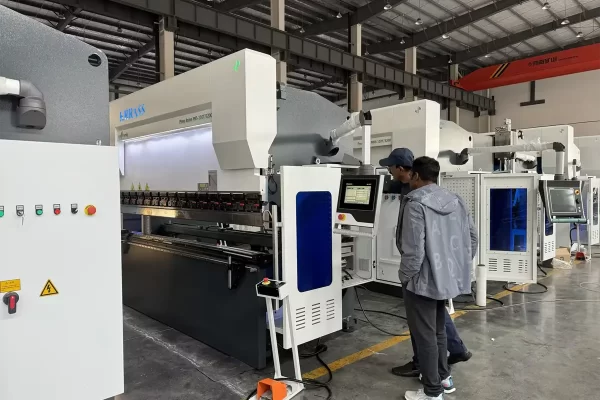
Disadvantages of Hydraulic Press Brakes
Despite the numerous advantages that Hydraulic Press Brakes offer, like power and versatility, it's important to consider their drawbacks to ensure you're making the best decision for your operations. Here are some of the key disadvantages:
Higher Maintenance Requirements: Hydraulic press brakes involve complex hydraulic systems with numerous components such as seals, valves, and pumps. These components are prone to wear and tear over time, leading to a need for regular maintenance and potential downtime, which can affect production schedules.
Operational Costs: Operating a hydraulic press brake can be more costly over time, primarily due to the power consumption required to maintain hydraulic pressure. Additionally, the hydraulic oil needs periodic replacement to keep the system running smoothly, adding to the operational costs.
Environmental Concerns: Hydraulic systems rely on hydraulic fluid, which poses a risk of leaks. These leaks not only contribute to operational inefficiencies but also raise environmental concerns due to the potential for soil and water contamination.
Slower Speeds Compared to Electric Press Brakes: While hydraulic press brakes are powerful, they generally operate at slower speeds than their electric counterparts. This can be a significant drawback in high-volume production environments where speed and efficiency are paramount.
In conclusion, while Hydraulic Press Brakes are an excellent choice for certain applications due to their power and versatility, it's essential to weigh these disadvantages carefully. Factors such as maintenance requirements, operational costs, environmental concerns, and production speed need to be considered to determine if a hydraulic press brake is the right fit for your manufacturing needs.
Key Features of Hydraulic Press Brake
Understanding the distinct features of a Hydraulic Press Brake is essential for manufacturers aiming to optimize their metal forming processes. Here, we'll explore the characteristics that make hydraulic press brakes a preferred choice for various industrial applications:
Robust Power and Versatility: Hydraulic press brakes are celebrated for their robust power, which allows them to handle a wide range of material thicknesses and sizes. This versatility makes them suitable for a variety of bending tasks, from light metal sheets to heavy plates.
Flexibility in Operation: The ability to adjust the pressure and angle makes the hydraulic press brake highly adaptable to various jobs. Operators can fine-tune the machine settings to achieve precise bending results, accommodating different materials and specifications.
Durability and Longevity: Built to withstand heavy-duty usage, hydraulic press brakes are known for their durability. The robust construction and quality components ensure that these machines can deliver reliable performance over many years, making them a valuable long-term investment for your manufacturing operations.
User-Friendly Controls: Modern hydraulic press brakes come equipped with CNC (Computer Numerical Control) technology, enhancing their ease of use and precision. The intuitive controls allow for quick setup and adjustments, reducing downtime and increasing productivity.
In conclusion, the Hydraulic Press Brake remains a fundamental tool in the metalworking industry, thanks to its power, versatility, flexibility, durability, and user-friendly controls. Whether you're dealing with heavy-duty bending tasks or seeking precision for intricate projects, the hydraulic press brake meets a wide array of manufacturing needs, making it an indispensable asset in your workshop.
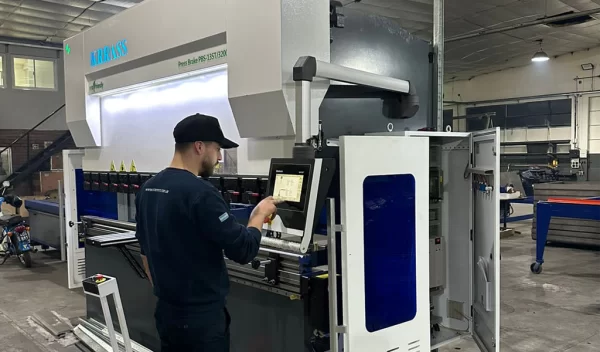
Popular Applications of Hydraulic Press Brake
The Hydraulic Press Brake is a versatile tool used across various industries, capitalizing on its power and flexibility to perform a range of metal bending tasks. Here's how different sectors leverage the capabilities of hydraulic press brakes:
Heavy Industry Uses: In sectors such as shipbuilding, large-scale machinery manufacturing, and structural steel construction, the hydraulic press brake proves invaluable. Its ability to handle large, thick materials with precision makes it a staple in the heavy industry, where robustness and reliability are non-negotiable.
Custom Metal Fabrication: The adaptability of hydraulic press brakes is a game-changer for custom metal fabricators. With the ability to adjust pressure, angle, and depth, these machines can create intricate and bespoke pieces, from artistic sculptures to specialized industrial components. This flexibility supports small batch production and prototyping, making hydraulic press brakes a favorite in custom fabrication shops.
Automotive Sector: In the automotive industry, precision and repeatability are key. Hydraulic press brakes are used to form parts like car frames, chassis, and other components requiring precise bends and curves. Their power and control ensure that even the most demanding automotive standards are met, contributing to the sector's continuous push for innovation and quality.
In essence, the Hydraulic Press Brake finds its place in environments where strength, precision, and flexibility are paramount. From heavy-duty industrial applications to precise custom fabrications and automotive manufacturing, hydraulic press brakes are integral to the workflows of numerous sectors, demonstrating their wide-ranging applicability and importance in modern manufacturing processes.
Advantages of Electric Press Brakes
As technology advances, the Electric Press Brake is becoming a preferred choice for many fabricators due to its unique set of benefits. Let's delve into the advantages that set electric press brakes apart from their hydraulic counterparts:
Energy Efficiency: One of the standout features of electric press brakes is their energy efficiency. Unlike hydraulic machines that require constant power to maintain pressure, electric press brakes consume power only when in motion. This can lead to significant energy savings, especially in high-volume production environments, reducing operational costs and contributing to a greener manufacturing process.
Precision and Consistency: Electric press brakes are renowned for their precision and consistency. Thanks to advanced servo-electric motors and control systems, these machines can achieve incredibly accurate bends, time after time. This level of precision is particularly beneficial in industries where even the slightest deviation can lead to rejected parts and increased waste.
Lower Maintenance Costs: With fewer moving parts and no hydraulic fluids to change, the maintenance requirements for electric press brakes are significantly lower than those for hydraulic models. This not only reduces the time and money spent on maintenance but also increases machine uptime, boosting productivity and profitability.
In conclusion, the Electric Press Brake offers compelling advantages for modern manufacturers, including energy efficiency, precision, consistency, and lower maintenance costs. These benefits make electric press brakes an attractive investment for businesses looking to enhance their production capabilities while reducing their environmental impact and operational expenses.
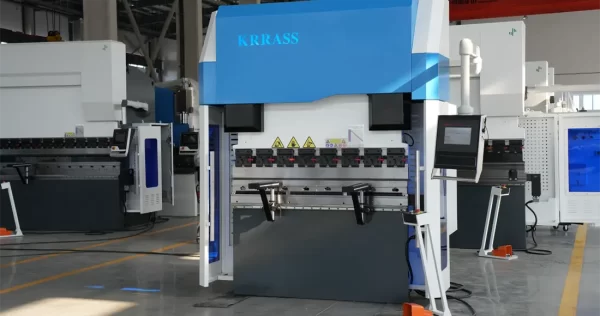
Disadvantages of Electric Press Brakes
While Electric Press Brakes are celebrated for their efficiency and precision, they are not without their drawbacks. Understanding these limitations is crucial for manufacturers to make informed decisions. Here are some of the primary disadvantages associated with electric press brakes:
Initial Investment Costs: One of the most significant barriers to adopting electric press brakes is their initial investment cost. Typically, electric models are more expensive upfront than their hydraulic counterparts. This higher initial cost can be prohibitive for small to medium-sized businesses or those with limited capital, making it a critical factor to consider when evaluating the return on investment.
Limitations in Power and Size: Although electric press brakes excel in precision and energy efficiency, they generally do not match the raw power and size capacity offered by hydraulic press brakes. This can be a considerable disadvantage when working with very thick materials or requiring large-scale bending operations. As such, businesses that primarily deal with heavy-duty bending tasks may find electric press brakes less suitable.
Suitability for Specific Jobs: Electric press brakes are best suited for jobs that demand high precision and repeatability. However, for operations that require versatility and the ability to handle a wide range of materials and thicknesses, electric press brakes might not be the best fit. This makes them less versatile compared to hydraulic press brakes in some manufacturing settings.
In summary, while Electric Press Brakes offer numerous benefits, their higher initial costs, limitations in power and size, and suitability for specific jobs must be carefully considered. These factors can significantly influence the overall efficiency and cost-effectiveness of the production process in certain environments.
Key Features of Press Brakes: Speed, Noise Levels, Accuracy, Repeatability, and Eco-Friendliness
When choosing between a Hydraulic Press Brake and an Electric Press Brake, understanding the key features that distinguish them is crucial. Let's explore the aspects of speed and noise levels, accuracy and repeatability, and eco-friendliness, which are essential in the decision-making process:
Speed and Noise Levels: Electric press brakes generally offer higher speeds and quieter operation compared to hydraulic press brakes. The advanced servo-electric motors in electric press brakes allow for rapid movement and shorter cycle times, enhancing productivity. Additionally, without the hydraulic pumps and systems, electric press brakes operate with significantly lower noise levels, contributing to a more comfortable and safer workplace environment.
Accuracy and Repeatability: In terms of precision, electric press brakes excel with their ability to deliver consistent results. The direct application of force through servo-electric motors allows for precise control over the bending process, ensuring high accuracy and repeatability. This precision is crucial for industries where the slightest deviation can lead to significant quality issues.
Eco-Friendliness: Environmental considerations are becoming increasingly important in manufacturing decisions. Electric press brakes have a clear advantage in this area as they are more energy-efficient and do not require hydraulic oil, reducing the risk of leaks and contamination. This eco-friendly aspect is not only beneficial for the environment but can also improve a company’s sustainability credentials and reduce operational costs.
In conclusion, the key features of press brakes, such as speed, noise levels, accuracy, repeatability, and eco-friendliness, play a significant role in determining the most suitable type for your operations. By understanding these characteristics, businesses can make more informed choices that align with their production needs and environmental goals.
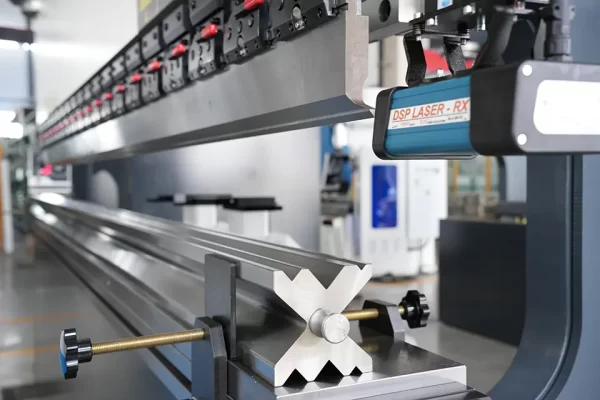
Popular Applications of Electric Press Brakes
The unique advantages of Electric Press Brakes make them particularly suitable for specific applications where precision, efficiency, and cleanliness are paramount. Let's explore how different sectors benefit from the capabilities of electric press brakes:
Electronics Manufacturing: In the realm of electronics manufacturing, where components are often delicate and require precise bending, electric press brakes shine. Their exceptional accuracy and repeatability ensure that even the smallest, most intricate parts meet strict specifications, making them ideal for producing parts like enclosures, brackets, and panels used in electronic devices.
Small to Medium-Sized Enterprises (SMEs): SMEs often look for equipment that offers flexibility, lower operational costs, and minimal maintenance. Electric press brakes meet these needs perfectly. Their energy efficiency, reduced maintenance requirements, and compact size make them an excellent choice for smaller operations that need to optimize their production space and budget while maintaining high-quality output.
Precision Engineering: In industries where precision is non-negotiable, such as aerospace, medical equipment, and precision machinery, electric press brakes are the go-to solution. The high level of control and accuracy they offer ensures that components meet the exacting standards required in these fields, minimizing waste and rework.
In conclusion, Electric Press Brakes are particularly favored in sectors like electronics manufacturing, SMEs, and precision engineering due to their accuracy, efficiency, and cleanliness. Their ability to provide consistent, high-quality results with lower operating costs makes them a valuable asset in these industries.
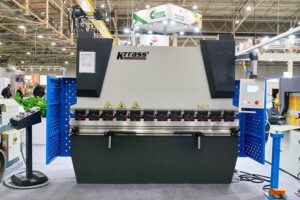
Comparing Hydraulic and Electric Press Brakes
Choosing between a Hydraulic Press Brake and an Electric Press Brake involves evaluating various factors such as power, precision, operational costs, and specific application needs. Let's dive into a comprehensive comparison to help you understand which type might be best suited for your manufacturing requirements:
Power and Versatility: Hydraulic press brakes are known for their robust power and versatility, making them suitable for heavy-duty bending tasks and handling a wide range of material thicknesses. Electric press brakes, while highly efficient and precise, may not match the raw bending force offered by hydraulic models, making them less ideal for extremely thick materials.
Precision and Speed: Electric press brakes excel in precision and speed, thanks to their advanced servo-electric technology. They are ideal for applications requiring high accuracy and repeatability. Hydraulic press brakes, while precise, may not consistently match the speed and exactness of electric models, especially over long production runs.
Operational Costs and Maintenance: Electric press brakes typically offer lower operational costs and require less maintenance compared to hydraulic ones, due to their simpler mechanics and the absence of hydraulic fluid. Hydraulic press brakes, on the other hand, may incur higher ongoing costs and maintenance due to their complex hydraulic systems.
Eco-Friendliness: In terms of environmental impact, electric press brakes have a clear advantage. They operate more cleanly, without the need for hydraulic oil, reducing the risk of leaks and contamination. This makes them a more eco-friendly option compared to hydraulic press brakes.
In summary, the choice between hydraulic and electric press brakes depends on your specific production needs, environmental considerations, and budget constraints. Hydraulic press brakes are more suited for heavy-duty applications and offer greater versatility, while electric press brakes are ideal for high-precision, high-speed, and eco-friendly operations. Weighing the pros and cons of each type will guide you to the best choice for your manufacturing setup.
How to Choose the Right Press Brake
Selecting the right press brake for your manufacturing operations is a critical decision that can affect your productivity, quality, and bottom line. Here are essential factors to consider when choosing the best press brake, whether Hydraulic or Electric:
Assess Your Material and Bending Needs: Start by evaluating the type of materials you will be working with and the range of bending operations required. Consider the thickness and length of the materials, as well as the complexity of the bends. This assessment will help you determine the power and size of the press brake needed.
Consider Precision and Repeatability: Determine the level of precision and repeatability required for your projects. If your work demands high precision and consistency, an Electric Press Brake may be more suitable due to its superior control and accuracy.
Evaluate Production Volume: Your production volume is another critical factor. If you are operating a high-volume, repetitive production, the speed and efficiency of an Electric Press Brake might be beneficial. For lower volumes or more varied jobs, a Hydraulic Press Brake might offer the versatility and cost-effectiveness you need.
Analyze Operational Costs: Look beyond the initial purchase price to consider the total operational costs, including maintenance, energy consumption, and potential downtime. Electric Press Brakes typically offer lower ongoing costs compared to Hydraulic Press Brakes.
Consider Future Needs: Think about not only your current projects but also potential future work. Choose a press brake that can grow with your business, offering the flexibility to adapt to new materials, techniques, and job types.
Eco-Friendly Options: If environmental concerns or regulations are a factor in your operations, consider the eco-friendliness of the machine. Electric Press Brakes, which are generally more energy-efficient and cleaner, might be the preferred choice.
In conclusion, choosing the right press brake involves a careful analysis of your specific needs, production goals, and budget constraints. By considering the factors above, you can select a press brake that not only meets your current requirements but also supports your future growth and success.
Discover Your Ideal Press Brake with Krrass
Choosing between a Hydraulic Press Brake and an Electric Press Brake is a significant decision that can impact your manufacturing outcomes. Each type offers unique benefits tailored to different operational needs. Whether your priority is power and versatility, or precision and eco-friendliness, there is a solution out there for you.
At Krrass, we specialize in manufacturing both Hydraulic and Electric Press Brakes, designed to meet the highest standards of quality and efficiency. With years of expertise and a commitment to innovation, we can help you find the perfect press brake to elevate your production processes. Visit our global website at https://www.krrass.com/ to explore our range and speak with our experts. Let us help you make an informed decision that propels your manufacturing capabilities into the future.
